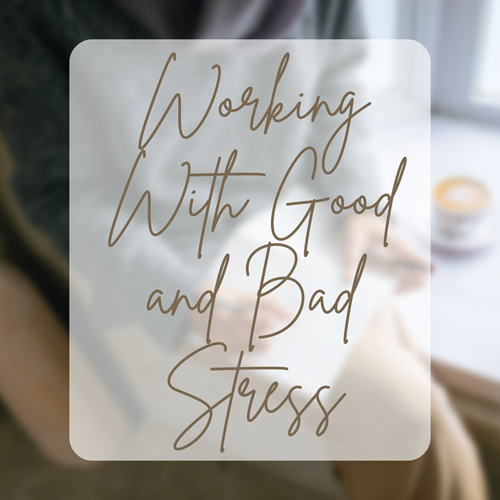Stress is an inevitable part of life, especially in the workplace. However, not all stress is harmful. In fact, there is a distinct difference between “good” stress, which can drive us to perform at our best, and “bad” stress, which can lead to burnout and health issues. Learning to recognize and manage these types of stress can help us harness the positive aspects while minimizing the negative impact on our well-being.
Understanding Good Stress (Eustress)
Good stress, or eustress, is the type of stress that motivates and energizes us. It arises from situations that challenge us in a positive way, pushing us to grow, learn, and achieve our goals.
1. Increased Focus and Productivity: Eustress sharpens our focus, helping us stay alert and engaged in our tasks.
2. Enhanced Performance: This type of stress can enhance our performance, driving us to meet deadlines and tackle complex problems with enthusiasm.
3. Personal Growth: Eustress often occurs when we step out of our comfort zones, leading to personal and professional development.
Understanding Bad Stress (Distress)
Bad stress, or distress, is the negative form of stress that can overwhelm and exhaust us. It typically arises from situations where we feel out of control, overloaded, or uncertain about outcomes.
1. Reduced Productivity: Distress can lead to procrastination, mistakes, and decreased efficiency, as it drains our mental and physical energy.
2. Negative Health Effects: Chronic distress can contribute to various health problems, including anxiety, depression, high blood pressure, and sleep disorders.
3. Burnout: Prolonged exposure to distress can lead to burnout, characterized by emotional exhaustion, detachment, and a lack of accomplishment.
10 Tips for Managing Good and Bad Stress
1. Identify Your Stressors: Recognize the situations or tasks that cause you stress, distinguishing between those that motivate you and those that overwhelm you.
2. Set Realistic Goals: Avoid unnecessary distress by setting achievable goals and breaking larger tasks into smaller, manageable steps.
3. Embrace Challenges: View challenging tasks as opportunities for growth rather than threats, which can help transform potential distress into eustress.
4. Prioritize Self-Care: Take care of your physical and mental health through regular exercise, healthy eating, and adequate sleep to build resilience against distress.
5. Practise Relaxation Techniques: Incorporate stress-reducing activities like deep breathing, meditation, or yoga into your daily routine to manage distress.
6. Maintain a Positive Attitude: Cultivate a positive mindset to help you cope with stressors more effectively and minimize the impact of distress.
7. Seek Support: Don’t hesitate to reach out to colleagues, friends, or professionals when stress becomes overwhelming. Sharing your concerns can lighten the load.
8. Stay Organized: Keep your work environment and schedule organized to reduce stress caused by chaos or last-minute rushes.
9. Take Breaks: Regular breaks can prevent good stress from turning into bad stress by giving you time to recharge and refocus.
10. Reflect and Adjust: Regularly assess your stress levels and make adjustments to your workload, expectations, or coping strategies as needed.
Understanding and managing stress is key to maintaining a healthy and productive work life. By recognizing the difference between good and bad stress, and implementing strategies to manage both, you can harness the power of eustress to drive success while keeping distress at bay. This balanced approach will not only improve your performance but also enhance your overall well-being.

